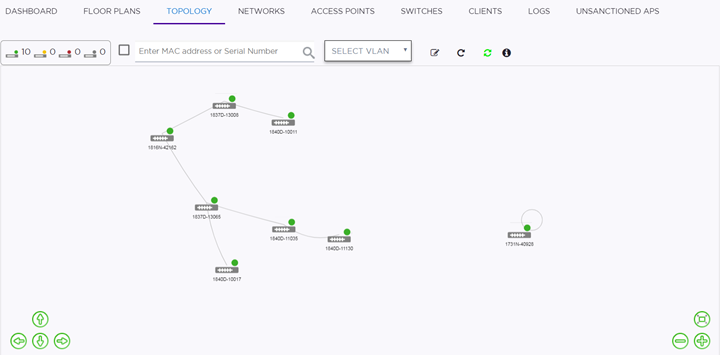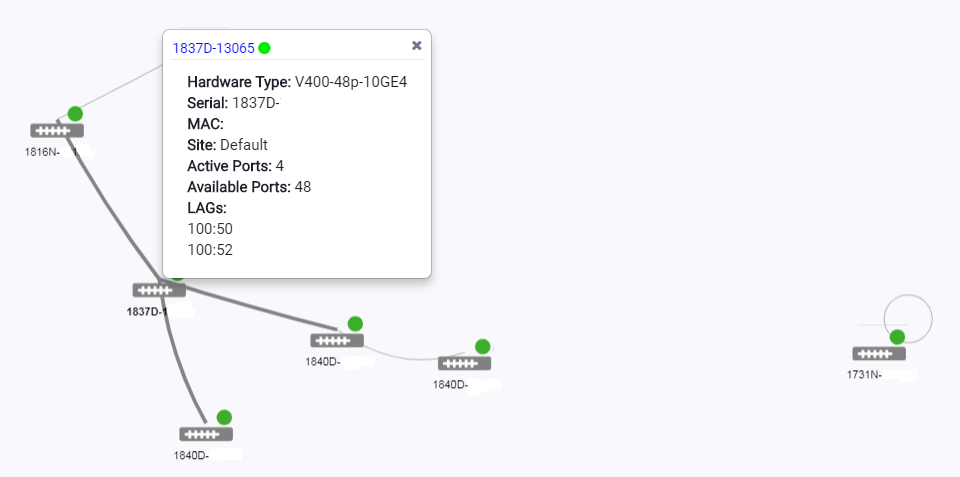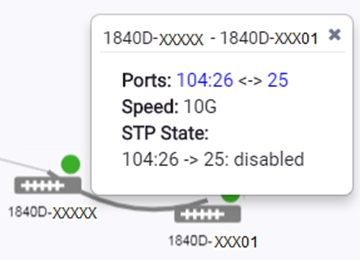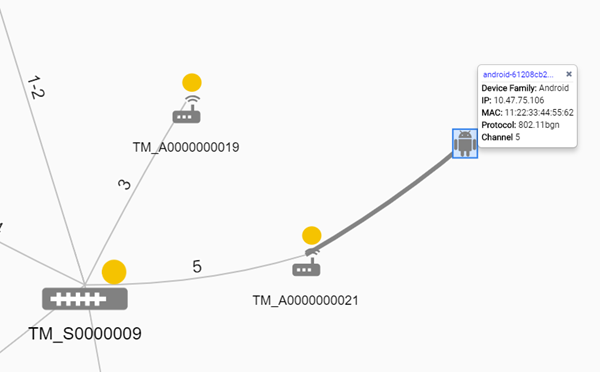Topology Manager monitors the network topology state for physical devices, showing L2 switch interconnects and the end device connections to the switch. The data is displayed in the user interface using a physical layer diagram to show a switch and what is connected to each port. Zoom in and out to see the state of nodes and edge devices in a network.
To access and use the Topology Manager:


| Toggle Devices | A graphic box displays a set of
switches in different states, showing the number of switches in each state. Select
the graphic box to toggle to a set of access points that show the number of access
points in each state. The states are:
|
| Annotation | By default, the Annotation checkbox is disabled. Select the checkbox to display the ports on the edge between devices in the topology diagram. |
| Search | Search by MAC address or by devices serial number. |
| Select VLAN | If available, select a VLAN to filter on in the current nodes that display. You can use this option at any level of the topology, such as site, switch, access point, or client. |
| Editing Controls | Lets you edit, save, undo, redo, and regenerate the map. To edit the nodes (icons), select Edit, then drag the nodes and select Save. The Refresh button refreshes the page. |



